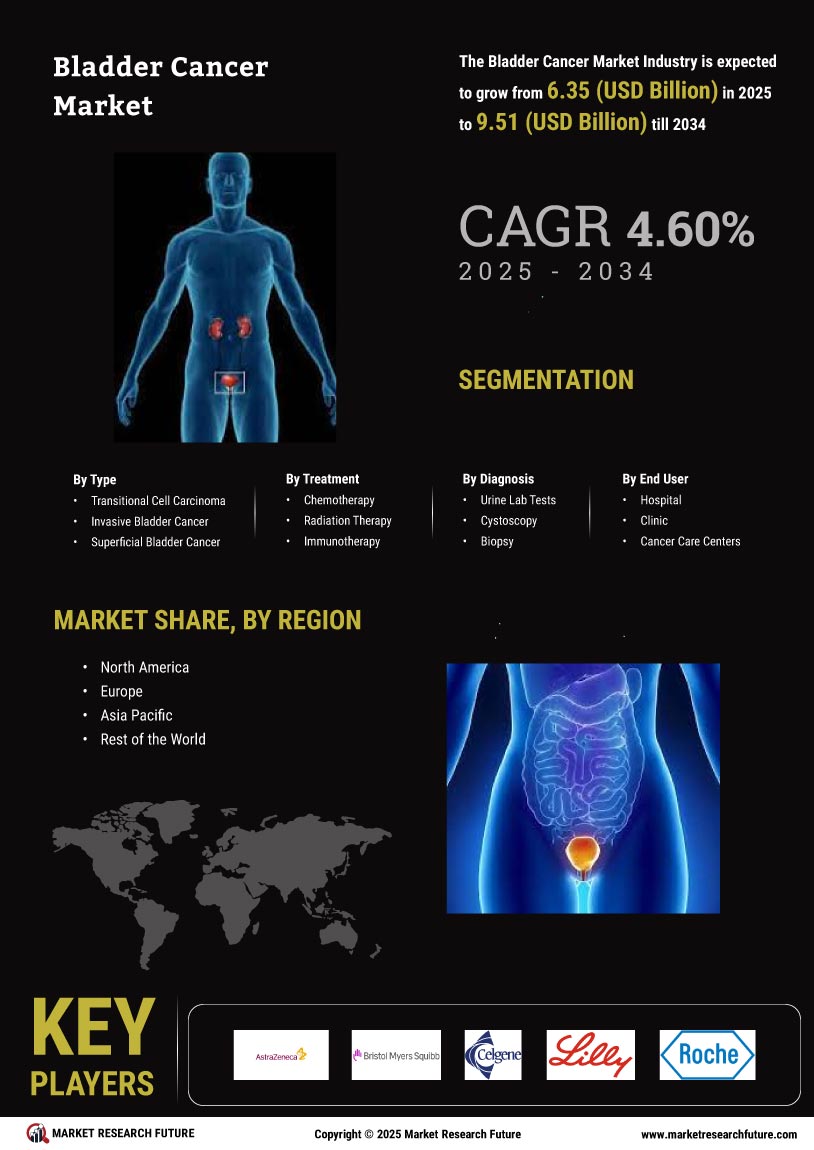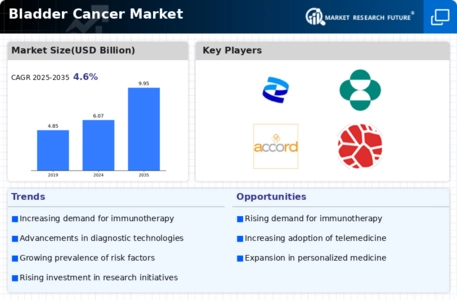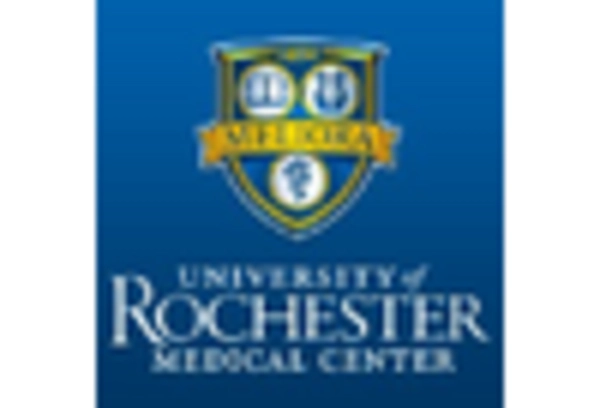Market Growth Projections
The Global Bladder Cancer Market Industry is projected to experience substantial growth in the coming years. By 2035, the market is expected to reach 9.95 USD Billion, indicating a robust demand for bladder cancer therapies and diagnostics. This growth trajectory is supported by various factors, including the rising incidence of bladder cancer, advancements in treatment modalities, and increased awareness among the public. The market's expansion reflects the ongoing efforts to improve patient outcomes and the commitment of stakeholders to address the challenges posed by bladder cancer.
Rising Incidence of Bladder Cancer
The Global Bladder Cancer Market Industry is experiencing growth due to the increasing incidence of bladder cancer worldwide. According to health statistics, bladder cancer ranks as the fourth most common cancer in men and the ninth in women, leading to a substantial patient population requiring treatment. This rise in cases is attributed to various factors, including smoking, exposure to certain chemicals, and aging populations. As the global population ages, the number of diagnosed cases is projected to increase, thereby driving demand for innovative therapies and diagnostic tools within the Global Bladder Cancer Market Industry.
Advancements in Treatment Modalities
Innovations in treatment modalities are significantly influencing the Global Bladder Cancer Market Industry. The development of targeted therapies and immunotherapies has transformed the treatment landscape, offering patients more effective options with fewer side effects. For instance, the introduction of immune checkpoint inhibitors has shown promising results in advanced bladder cancer cases. These advancements not only improve patient outcomes but also contribute to the overall market growth, as healthcare providers increasingly adopt these novel therapies. The Global Bladder Cancer Market Industry is expected to reach 6.07 USD Billion in 2024, reflecting the impact of these advancements.
Investment in Research and Development
Investment in research and development is a critical driver for the Global Bladder Cancer Market Industry. Pharmaceutical companies and research institutions are increasingly allocating resources to discover new therapeutic agents and improve existing treatments. This focus on R&D is essential for addressing unmet medical needs and advancing the understanding of bladder cancer biology. As a result, the market is likely to see a surge in novel drug approvals and clinical trials, fostering innovation. The Global Bladder Cancer Market Industry is projected to grow at a CAGR of 4.59% from 2025 to 2035, reflecting the positive impact of these investments.
Growing Awareness and Screening Programs
Increased awareness regarding bladder cancer symptoms and risk factors is propelling the Global Bladder Cancer Market Industry. Public health campaigns and educational initiatives are encouraging individuals to seek early diagnosis and treatment, which is crucial for improving survival rates. Screening programs, particularly in high-risk populations, are becoming more prevalent, leading to earlier detection of the disease. This proactive approach not only enhances patient outcomes but also stimulates market growth as more individuals are diagnosed and treated. The Global Bladder Cancer Market Industry is poised for expansion as awareness continues to rise.
Regulatory Support and Approval Processes
Regulatory support plays a vital role in shaping the Global Bladder Cancer Market Industry. Agencies such as the FDA and EMA are streamlining approval processes for new therapies, which facilitates quicker access to innovative treatments for patients. This supportive regulatory environment encourages pharmaceutical companies to invest in bladder cancer research and development, knowing that their products can reach the market more efficiently. As a result, the Global Bladder Cancer Market Industry is likely to benefit from an influx of new therapies, enhancing treatment options for patients and contributing to overall market growth.

















